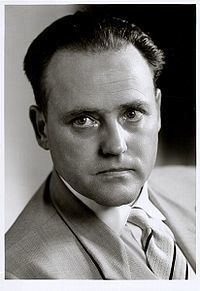Nationality Swiss Role Mathematician Education ETH Zurich | Alma mater ETH Zurich Name Eduard Stiefel | |
 | ||
Born 21 April 1909Zurich ( 1909-04-21 ) Doctoral students Corrado BohmJean DesclouxWalter HabichtPeter HenriciPeter LauchliMax RosslerCarl Zehnder Died November 25, 1978, Zurich, Switzerland Books Linear and regular celestial mechanics, An introduction to numerical mathematics Similar People Heinz Rutishauser, Peter Henrici, Heinz Hopf, Corrado Bohm, Paul Bernays | ||
Eduard L. Stiefel (21 April 1909 – 25 November 1978) was a Swiss mathematician. Together with Cornelius Lanczos and Magnus Hestenes, he invented the conjugate gradient method, and gave what is now understood to be a partial construction of the Stiefel–Whitney classes of a real vector bundle, thus co-founding the study of characteristic classes.
Contents
Biography
Stiefel entered the Swiss Federal Institute of Technology (ETH Zurich) in 1928. He received his Ph.D. in 1935 under Heinz Hopf; his dissertation was titled "Richtungsfelder und Fernparallelismus in n-dimensionalen Mannigfaltigkeiten". Stiefel completed his habilitation in 1942. Besides his academic pursuits, Stiefel was also active as a military officer, rising to the rank of colonel in the Swiss army during World War II.
Stiefel achieved his full professorship at ETH Zurich in 1948, the same year he founded the Institute for Applied Mathematics. The objective of the new institute was to design and construct an electronic computer (the Elektronische Rechenmaschine der ETH, or ERMETH). He spent a year in the United States commencing in August, 1951. During this time, he met Magnus Hestenes and many other scientists at the National Bureau of Standards and these professional associations served him well during the remainder of his career at Zurich.
